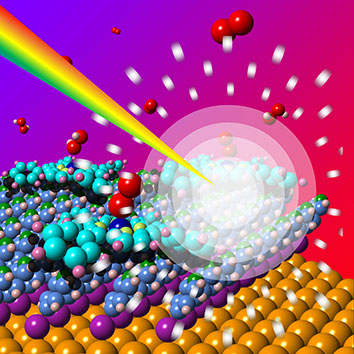

| Physical and chemical phenomena
emerging at surfaces and interfaces play an important role in
realizing various functions on a solid surface. In particular,
electron transfers at solid-liquid interfaces can mediate the
interactions between electrical energy and chemical change.
Thus, a deeper understanding of controlling interfacial electron transfers is required
for further advancement in energy technology. We investigate
electron transfer phenomena using various spectroscpic and
electrochemical methods for characterization and
modification of solid surfaces on the atomic and molecular scale. <Research interests> - Electrochemical and spectroscopic investigations of electrified interfaces - Atomic and molecula scale design of functional surfaces - Development of novel spectroscopic methods |
 |